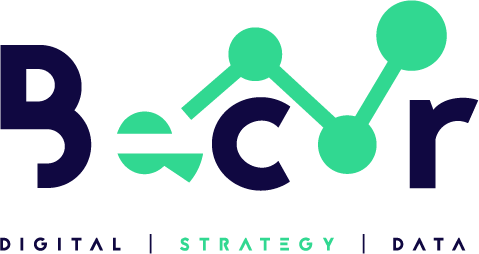I. Introduction
Judges and lawyers are often required to review and analyze large volumes of text data such as legal documents, court rulings, case law, and evidence. This process can be time-consuming and tedious, and it is also prone to errors and inconsistencies. Moreover, the complexity and ambiguity of legal language and jargon can make it difficult to extract relevant information and insights from these documents.
AI can help address these challenges by leveraging natural language processing (NLP) techniques to extract key facts, entities, relationships, and events from large volumes of text data. AI-powered tools can automatically identify relevant information and present it in a structured and organized format, making it easier for judges and lawyers to review and analyze. Additionally, AI can utilize machine learning and predictive analytics to streamline the workflow, reduce errors, and improve the accuracy and consistency of legal decisions. This can ultimately lead to faster and more efficient legal processes, and better outcomes for all parties involved.

II. Text analysis with AI
AI-powered text analysis tools can help extract key information from legal documents by using techniques such as natural language processing (NLP), named entity recognition (NER), and sentiment analysis. NLP algorithms are used to understand the meaning of words and the context in which they are used. NER algorithms identify and extract entities such as people, organizations, and locations mentioned in the text. Sentiment analysis algorithms can identify the overall sentiment expressed in the text, whether it is positive, negative, or neutral.
Examples of specific AI tools and techniques that can be used for text analysis in the legal domain include:
- Contract analysis tools: These tools use NLP and machine learning algorithms to identify key clauses in contracts, such as payment terms, termination clauses, and non-disclosure agreements.
- Case law search engines: These tools use NLP to understand the meaning of legal queries and search through a large database of case law to find relevant precedents.
- Document review tools: These tools use NER to identify people, organizations, and other entities mentioned in legal documents, as well as sentiment analysis to identify the overall sentiment expressed in the text.
- Predictive analytics tools: These tools use machine learning algorithms to analyze data from past cases and predict the outcomes of future cases based on the specific details of the case.
By using these AI-powered text analysis tools, judges and lawyers can save time and improve the accuracy of their work.
III. Case law and precedent research
AI can be used to search and analyze vast amounts of case law and precedents to help judges and lawyers make more informed decisions. By using machine learning algorithms, AI can identify patterns and relationships between cases that would be difficult for humans to identify on their own. AI can analyze multiple factors, such as the parties involved, the legal issues at stake, and the outcomes of previous cases, to predict the likely outcome of a case based on its specific characteristics.
One example of an AI tool for legal analysis is Lex Machina, which uses natural language processing and machine learning to analyze large volumes of case law and patent data. It provides insights into legal trends, key players, and the likely outcomes of cases, helping lawyers make more informed decisions.
Another example is ROSS Intelligence, which uses NLP and machine learning to analyze legal documents and provide answers to specific legal questions. It can also provide insights into legal precedents and case law to help lawyers make more informed decisions.
AI can also be used for predictive analytics, which involves analyzing data to make predictions about future outcomes. By analyzing past case outcomes and identifying patterns and trends, AI can predict the likely outcome of a new case based on its specific characteristics. This can help lawyers and judges make more informed decisions and improve the overall efficiency of the legal system.
IV. E-discovery:
AI can help streamline the e-discovery process by using machine learning algorithms to prioritize and categorize documents. This involves training AI models to recognize patterns in the data, such as keywords, phrases, and concepts that are relevant to the case. By using these models, AI can quickly sift through large volumes of ESI and identify documents that are most likely to contain relevant evidence.
AI can also be used to identify and redact sensitive information, such as personal identifying information (PII) or privileged communications. This helps protect the privacy of individuals involved in the case, and ensures that only relevant information is used as evidence.
Moreover, AI-powered e-discovery tools can also use predictive coding to identify relevant documents based on their similarity to documents that have already been reviewed by lawyers. This saves time and effort by reducing the number of documents that need to be manually reviewed.
Finally, AI can be used to track and monitor the progress of e-discovery, providing real-time feedback on how much data has been reviewed, what documents have been prioritized, and what gaps still exist in the data. This allows lawyers and judges to make more informed decisions about the case and helps ensure that the discovery process is completed in a timely and efficient manner.
V. Benefits and challenges of AI in the Judiciary
AI can bring numerous benefits to the judiciary, such as faster and more accurate text analysis, improved decision-making, and greater efficiency. AI-powered text analysis tools can help extract key facts, entities, relationships, and events from legal documents, while AI can be used to search and analyze case law and precedents to help judges and lawyers make more informed decisions. Additionally, AI can streamline the e-discovery process by prioritizing and categorizing documents and identifying relevant information more quickly and efficiently.
However, there are also challenges and concerns associated with AI in the judiciary. These include data privacy, as sensitive legal information must be protected from unauthorized access or disclosure, bias, as AI algorithms can perpetuate or amplify existing biases, and ethical considerations, such as the responsibility to ensure that AI is used in ways that are fair, transparent, and accountable. It is important for the judiciary to carefully consider these challenges and implement appropriate safeguards to ensure that AI is used effectively and responsibly.
VI. Case Study
One example of a court that has successfully implemented AI in their operations is the Court of Justice of the European Union (CJEU). In 2018, the CJEU began using an AI-powered tool called eCuria to assist with the handling of legal cases.
eCuria uses natural language processing (NLP) and machine learning algorithms to analyze legal documents and help judges and lawyers identify relevant information more efficiently. The tool is able to analyze documents in 24 different languages, making it particularly useful in the multilingual environment of the CJEU.
Since implementing eCuria, the CJEU has reported a significant increase in efficiency, with judges and lawyers able to find relevant information more quickly and easily. The tool has also helped to improve consistency and accuracy in legal decision-making.
Additionally, eCuria has helped to reduce the workload of legal support staff, allowing them to focus on more complex tasks and reducing the risk of errors. The tool has also helped to reduce costs associated with document processing and legal research.
While the implementation of eCuria has been largely successful, there have also been concerns raised regarding the use of AI in the judiciary. These concerns include the potential for bias in AI algorithms, the risk of errors in AI-powered decision-making, and the need for transparency in the use of AI in legal proceedings.
However, the CJEU has taken steps to address these concerns, including ensuring that the tool is transparent and explainable, and that it is used in conjunction with human expertise and judgment. Overall, the implementation of eCuria has demonstrated the potential for AI to significantly improve the efficiency and effectiveness of the judiciary.
VII. Conclusion
AI has the potential to revolutionize the way legal services are delivered, making them faster, more accurate, and more efficient. By leveraging AI-powered text analysis tools, legal professionals can extract key facts, entities, relationships, and events from legal documents more quickly and accurately. AI can also be used to search and analyze case law and precedents to help judges and lawyers make more informed decisions. In addition, AI can streamline the e-discovery process, which involves reviewing large volumes of electronically stored information for relevant evidence.


